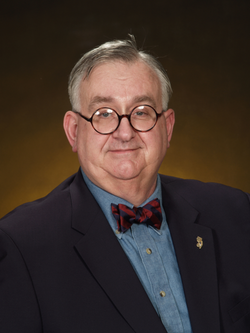Like many of you, I have been responding to emergencies for a long time now. As a matter of fact, my first ride on an ambulance came when I was a junior in high school back in 1964. When you are riding out to help others in an emergency, you have one perception of time. But what about the person (s) waiting for you to come? Are you really arriving quickly or do you just think that you are?
It took me a number of years to finally come up with an answer to this question. It came to me during my time in the Newark Fire department. It came to me forcefully during the time I spent hiding under my pumper with my crew and a Newark Police officer. The officer had been attacked by a group of unruly citizens and we just happened to be coming by. Since the officer had lost he radio, he yelled out to me to call fire dispatch and ask them to call the police dispatch. The call went out for “officer needs assistance.”
I could almost hear my watch slowly ticking and tocking as we waited for the needed assistance. Fortunately patrol cars began arriving within two minutes. However, those were among two of the longest moments of my life.The key is that help was called and help arrived. But what if no one came?
That has happened a couple of times across our nation in the past few weeks. One was a large fire out west, however the other was a traffic accident in Pennsylvania where the fact that help was called and none provided quickly led to the injury of a local fire police officer.
I was reminded of this by the two incidents I mentioned above. The first one happened in the state of Washington back in June. Firefighters in Everett arrived to find a structure heavily involved in fire. Second and third alarms were requested in rapid success. As it turns out, dispatchers were unable to provide the needed assistance because of glitches in their dispatch software; glitches which were well-known to all but not corrected. Apparently no one had created a back-up plan to address the potential for serious problems. You always need a plan.
The next incident comes from our highway safety world. Let me provide the facts as they came from my friend Don Konkle at the Pennsylvania Fire Service Institute.
It seems that one accident turned into four according to Pennsylvania State Police. This came about because the Northumberland County communications center did not immediately dispatch emergency responders as a state trooper requested. When Trooper Tyler Watson came across the first accident on state Route 61 outside Elysburg about 7:30 p.m. Friday he made a request through the Stonington state police substation that fire equipment, emergency medical personnel and fire police be dispatched to the scene.
That request was forwarded to the county 911 center, but there was a refusal to dispatch EMS and fire police until injuries were confirmed, Stonington station commander, Sgt. Raymond O'Donnell said Tuesday. State police made a request for help because the accident was on a curve on Route 61 and traffic was heavy, O'Donnell said. Because the road was not closed, there were three additional crashes within five minutes, he said.
Of the four crashes, two were reportable because there were either injuries or a vehicle had to be towed, he said. A Stonington fire police officer was injured in one of the crashes when his vehicle was struck from behind, he said. Elysburg Fire Chief Dennis Kroh said he cannot understand why additional questions had to be asked when a professional like Watson requested help. His department and Stonington's were eventually dispatched.
The delay in dispatch "was a surprise to us," he said. Once a 911 call comes in, "get us on the street," he said. "If we are not needed, we will leave." Russ Fellman, county 911 director, said he learned about the incident Friday afternoon and is conducting an investigation.
My friends, it is obvious to me that the need exists for the establishment of protocols to be created which address problems like this. The key to success is for all parties to the equation to come together in order to study the problems which might be encountered in a given community. All parties with a stake in the outcome need to be a part of the planning process. And all parties must train with the plans which arise from the process. All must become a part of the continuing process to insure that all anticipated contingencies are handled.
When we are operating within the dangerous environment which is our highway world, we must all use what we have been trained to do. Emergency scenes are never to be used as laboratories to test new theories. Like you I am a firm proponent of the old “know it before you need it” method of operating.
Take care and stay real safe out there on the highways and byways of our world.


